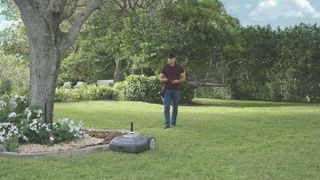Spectrum Battles Rage On in D.C.

With robotic vacuums gliding across millions of floors and Boeing aircraft sailing overhead full of passengers texting and streaming video, the FCC is getting plenty of input regarding freeing up the 6-GHz band for unlicensed WiFi hotspots critical to cable’s mobile internet business.
Last spring, the heads of the nation’s electric utilities and water and wastewater treatment facilities warned the FCC about moving too quickly to open up the 6-gigahertz midband spectrum currently used by those utilities.
Electric and water providers said they need the spectrum for their mission-critical communications. They contend the FCC’s proposal to open it up for unlicensed WiFi use is an untested, unproven approach the regulator is pursuing despite their concerns about interference and/or congestion that threatens critical infrastructure.
The tension with the FCC is emblematic of the challenge the agency and the WiFi industry face when trying to pry spectrum from incumbent users.
Power Makes a Play
Those users were back at it last month. The Edison Electric Institute’s top brass, representing power utilities serving some 220 million consumers, told the FCC its approach to allowing unlicensed use is risky and untested. It warned that the agency must drill down on that approach before allowing “billions” of devices to operate around, and potentially interfere with, critical infrastructure communications. Those crucial systems include crews repairing and restoring service after storms, as well as distributed energy systems such as smart meters and solar battery storage.
At about the same time as EEI made its pitch, executives with CableLabs, the cable industry’s technology consortium, were pitching a study they said demonstrates that low-power WiFi devices can coexist with incumbents without causing harmful interference and without the need for automatic frequency control (AFC). Cable broadband providers back AFC for higher-powered devices.
Broadcasting & Cable Newsletter
The smarter way to stay on top of broadcasting and cable industry. Sign up below

FCC chairman Ajit Pai has said the agency would protect incumbent utilities and others, but agrees with cable broadband providers that opening up the 6-GHz band to expanded WiFi has serious pro-consumer implications.
“The truth is that this 6-GHz spectrum boost will launch the WiFi industry into a new growth trajectory,” Pai told the WiFi World Congress last year. “It will boost WiFi’s massive indoor dominance. And surely — with the help of emboldened entrepreneurs everywhere — it will bring low-cost WiFi (and unlicensed) connectivity to places where it has never been.”
Pai has sought creative solutions to help protect utilities, public safety and wireless backhaul users of the band, but made it clear he wanted to let WiFi into the tent.
Boeing executives told the FCC that one creative solution would be to let it use the band for in-flight broadband without having to employ AFC, at least above 10,000 feet. The aircraft maker said the need for high-flying hotspots is at a critical point and called for an exception.
“The cabin of a large passenger aircraft has rapidly become the single most congested wireless operating environment, with hundreds of seated passengers simultaneously streaming programming content, playing interactive games, and staying in contact with coworkers, family, and friends,” Boeing said.
Less Room for Roomba

Throwing dirt on the FCC’s proposal was iRobot, which makes the Roomba robotic vacuum and more recently a self-propelled — as in humanless — lawnmower.
iRobot uses the 6 GHz band for ultra wideband communications with its devices, and says that allowing WiFi use at the power levels requested would render its devices inoperable due to interference.
That company is taking a page from Pai’s 5.9-GHz spectrum band playbook. He has proposed splitting the band, with WiFi using part and incumbent vehicle-to-vehicle communications users the other. iRobot said the FCC should similarly split the band, reserving 500 megahertz for ultra-wideband and letting WiFi have the other 700 MHz.
Pai has not said whether he would consider splitting up the 6-GHz band, but he did indicate at CES earlier this month that the FCC needs to find a way to spread that spectrum wealth to WiFi and other new technologies.
For their part, Google, Apple, Facebook and Microsoft have recently pushed the FCC to open up the entire band for unlicensed spectrum, according to commission documents.
In a CES Q&A with Consumer Technology Association president and CEO Gary Shapiro, Pai suggested that, incumbent recalcitrance aside, the FCC has to "find a way to share this public resource."
The chairman said there were unimaginable benefits for freeing up some of that 1,200 MHz of 6-GHz spectrum, including for augmented reality and virtual reality.
“Our goal is to remove spectrum as a constraint on unlicensed innovation,” Pai said.
Contributing editor John Eggerton has been an editor and/or writer on media regulation, legislation and policy for over four decades, including covering the FCC, FTC, Congress, the major media trade associations, and the federal courts. In addition to Multichannel News and Broadcasting + Cable, his work has appeared in Radio World, TV Technology, TV Fax, This Week in Consumer Electronics, Variety and the Encyclopedia Britannica.

